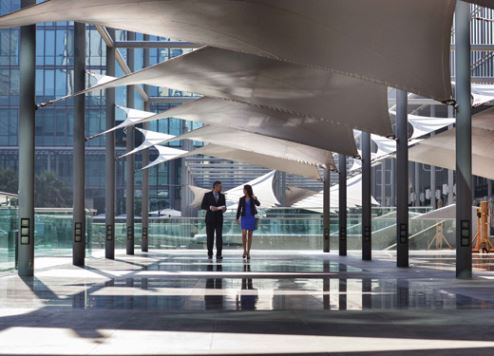Dubai tops Middle East office space real estate chart

City ranks 1st regionally and 23rd globally, according to CBRE report
Dubai leads the office space market in the Middle East and is ranked 23rd globally according to CBRE Global Research and Consulting’s Global Prime Office Occupancy Costs survey.
The Dubai office occupancy ranking has dropped by four places when compared to last year, translating to more affordable office rental space.
“We continue to see strong demand from international companies primarily seeking to improve the quality of accommodation and/or its efficiency,” said Nick Maclean, managing director, CBRE Middle East.
“The latter point is particularly important for organisations whose staff are spread across several buildings.”
Dubai’s position as first choice for international firms targeting expansion in the Middle East is very important. In addition to direct real estate considerations, the relative depth of the labour pool and the quality of the aviation transport sector are cited as important in corporate decision making.
“Overall, the market fundamentals in the commercial sector remains positive particularly for well-located buildings of good quality,” said Maclean.
“Poorly located offices with indifferent facilities, particularly those which are badly managed, will struggle against more competitive new stock.”
According to the CBRE research, Hong Kong (Central) remained the world’s highest-priced office market and Asia continued to dominate the world’s most expensive office locations. Shanghai (Pudong), China ranked 10th, while New York moved up to 9th place representing the most expensive office market in the Americas.
Hong Kong’s (Central) overall occupancy costs topped the “most expensive” list. London-Central (West End), United Kingdom followed with total occupancy costs Beijing (Finance Street), Beijing (Central Business District) and Hong Kong (West Kowloon) rounded out the top five.
Global prime office occupancy costs increased 2.4% in the year ending Q1 2016 reflecting the same rate of growth reported in the previous survey.
At the beginning of the year, the global stock markets were unstable, however the service sector was not adversely impacted. The study implies that economic growth is expected to pick up in the coming quarters which will then translate into further occupancy cost increases.
The report revealed how 22 markets had moved more than three ranks upwards and EMEA markets account for a 36% global market share. CBRE tracks occupancy costs for prime office space in 126 markets around the globe.
Europe Middle East & Africa (EMEA)
The study also found that occupancy costs in the EMEA region increased 2.1% year-over-year on an annual basis, on par with the 2.2% gain seen in Q3 2015. Dublin, Stockholm and Barcelona were the fastest- growing markets in the region. Most Central and Eastern European markets were down year-on-year, including Moscow, which is still in the midst of a recession. Costs accelerated quickly in South Africa, with Johannesburg, Cape Town and Durban all seeing increases of at least 6.9% from year-ago levels.
Office occupancy costs rose 2.7% year-over-year, up from 1.9% in Q3 2015. EMEA’s 2.1% year-over-year growth rate in Q1 2016 was about the same as the 2.2% pace seen in Q3 2015.
These rates of occupancy cost growth may seem low compared to the higher pace of growth in some of the individual markets where demand for space is very high. However, it is important to keep in mind that inflation is low, so 2.4% represents real growth in office occupancy costs, and is significant for both office users and investors.
Dubai’s occupancy cost was the 23rd most expensive in the world, just behind Sydney, Australia.


